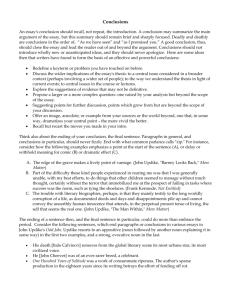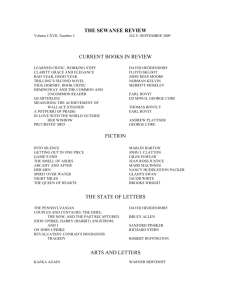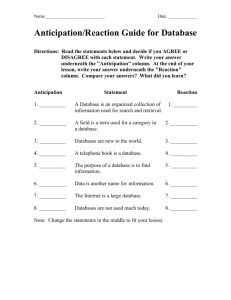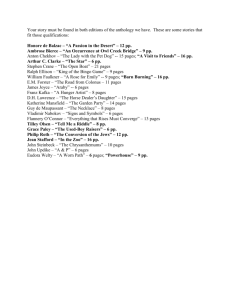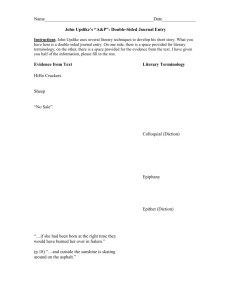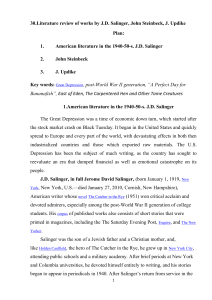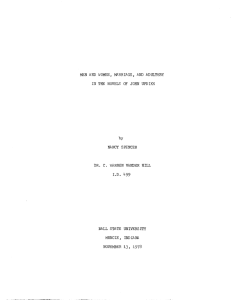“A & P” Vocabulary
advertisement
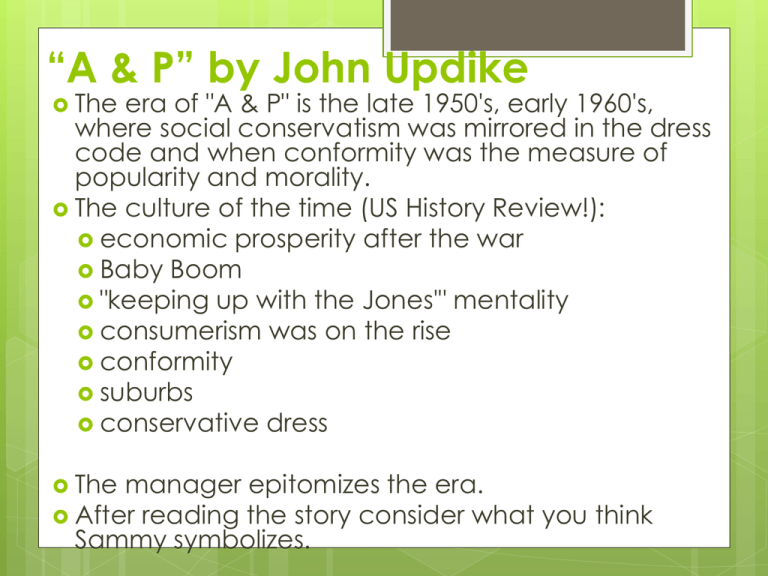
“A & P” by John Updike The era of "A & P" is the late 1950's, early 1960's, where social conservatism was mirrored in the dress code and when conformity was the measure of popularity and morality. The culture of the time (US History Review!): economic prosperity after the war Baby Boom "keeping up with the Jones'" mentality consumerism was on the rise conformity suburbs conservative dress The manager epitomizes the era. After reading the story consider what you think Sammy symbolizes. “A & P” Vocabulary This term is not in the story, but it is a important vocabulary term that will help deepen your analysis of the story. commodification: to turn into an economic good or product; something to buy and sell Keep in mind that this term does not always apply to inanimate objects. It can apply to humans too. “A & P” Anticipation Activity In an interview with PBS, John Updike, the author of this short story, said, “with any short story you try to write first sentences that will in some way pique the readers' interest, and then a lot of middle, and then you try to write a last sentence that will in some way close the case, close the issue, resolve it all, and leave him or her with a satisfied feeling of having seen a complete picture.” “A & P” Anticipation Activity First line of the story: “In walks these three girls in nothing but bathing suits.” Last line of the story: “His face was dark and his back stiff, as if he’d just had an injection of iron, and my stomach kind of fell as I felt how hard the world was going to be to me hereafter.” Directions: Use theses lines, the information we have already discussed, and the cards your group has to predict the plot of the story. DO NOT simply reread the cards in your presentation. Use this information to infer and predict the setting and plot of the story. “A & P” Analysis Questions Remember—up through 9th grade, your teachers mainly pushed you to get the main ideas of what you read. In later grades, we push you for depth and analysis. You should strive to understand why authors make particular choices: What viewpoint does the author espouse? How do the author’s word choices and details impact a reader’s understanding? Go beyond the surface! Use the questions given to you to help deepen your understanding and analysis of this story.

